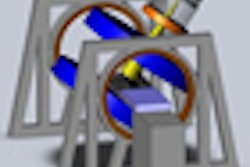Dear MRI Insider,
As an Insider subscriber, you have the first exclusive look at how diffusion-weighted MRI was used to screen children with sickle cell anemia. Researchers found that acute silent cerebral ischemic events occur more frequently than previously thought, and a child with sickle cell anemia is at constant threat of ischemia.
The study from Cincinnati Children's Hospital Medical Center detected acute silent cerebral ischemic events in 10 scans (1.3%) of 652 children, for an incidence rate of 47.3 events per 100 patient-years. In addition, these children could very well experience ongoing cerebral ischemia. Learn more in this Insider Exclusive.
In other top features, read how transcranial MR-guided focused ultrasound (MRgFUS) may offer a less invasive treatment alternative to patients with Parkinson's disease symptoms when their medications prove ineffective. Researchers at the University of Virginia recently launched a phase I clinical trial to evaluate the safety and effectiveness of MRgFUS in reducing tremor related to Parkinson's disease.
By measuring plasma volume in spine tumors with dynamic contrast-enhanced MRI, physicians can better assess treatment response even when conventional MRI results show little regression after successful radiosurgery, according to a study presented at the American Society for Radiation Oncology meeting. The researchers also concluded that plasma volume was the only significant variable that could accurately predict local recurrence or control of a lesion in the spine.
With the help of MRI to measure the wall thickness of coronary arteries, researchers from the U.S. National Institutes of Health may be able to identify coronary heart disease early in its progression. MRI could help overcome the problem of imaging extremely small coronary arteries that are in constant motion.
At the American Association of Physicists in Medicine annual meeting, there was promising news about a hybrid linear accelerator-MRI system being developed at the Cross Cancer Institute in Edmonton, Alberta. Real-time tumor tracking could prove invaluable for radiotherapy of moving targets, such as lung tumors, enabling minimization of treatment margins. The use of MRI for such tracking provides soft-tissue-based position verification without exposing patients to additional ionizing radiation.
Make a note to visit AuntMinnie.com on Thursday, November 15, to see our preview of novel MRI research papers scheduled for presentation at this year's annual RSNA meeting. And, if you can't make it to Chicago, we will provide news and other highlights everyday throughout the conference in our RADCast@RSNA special section, at radcast.auntminnie.com.



.fFmgij6Hin.png?auto=compress%2Cformat&fit=crop&h=100&q=70&w=100)




.fFmgij6Hin.png?auto=compress%2Cformat&fit=crop&h=167&q=70&w=250)











